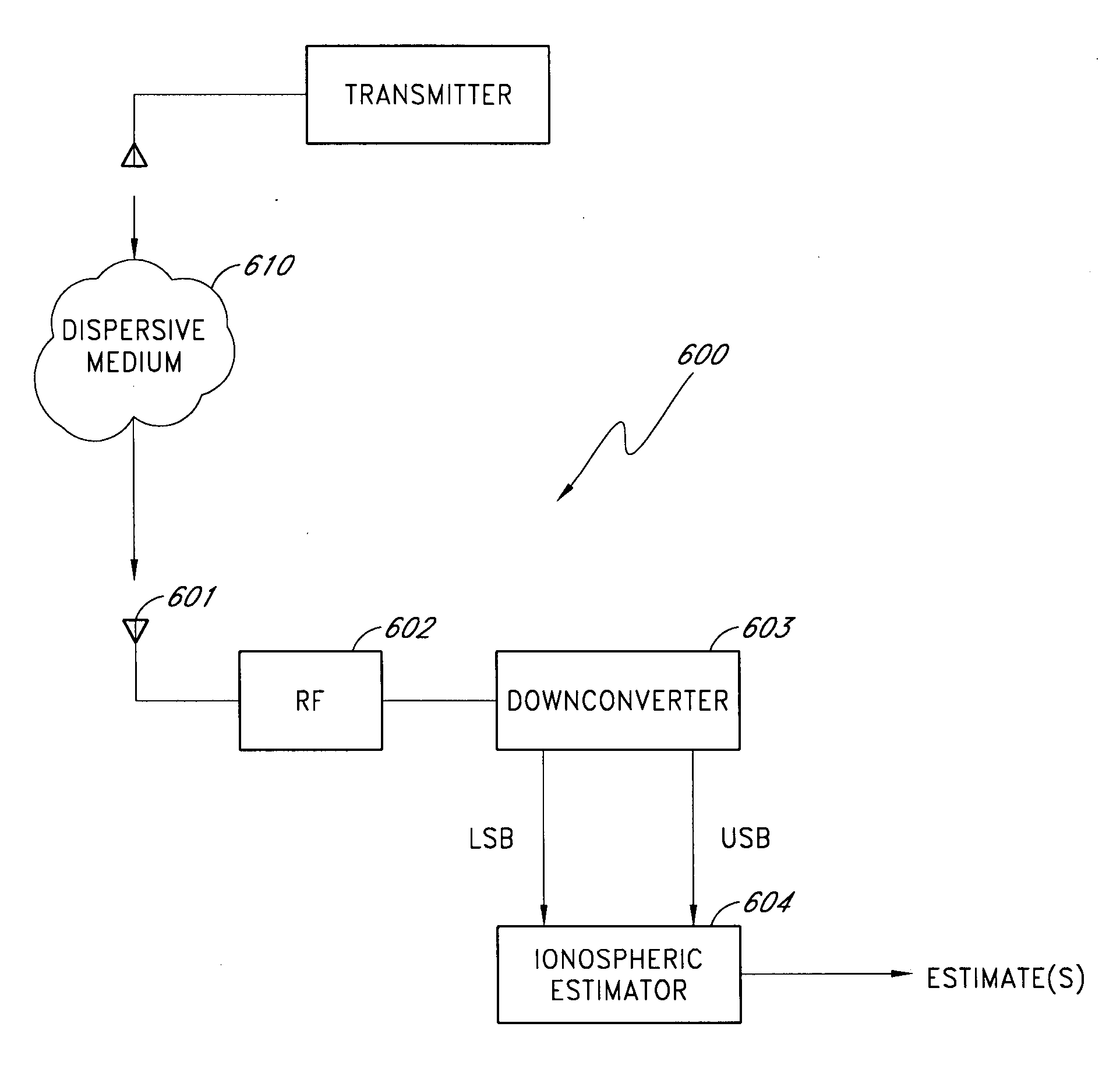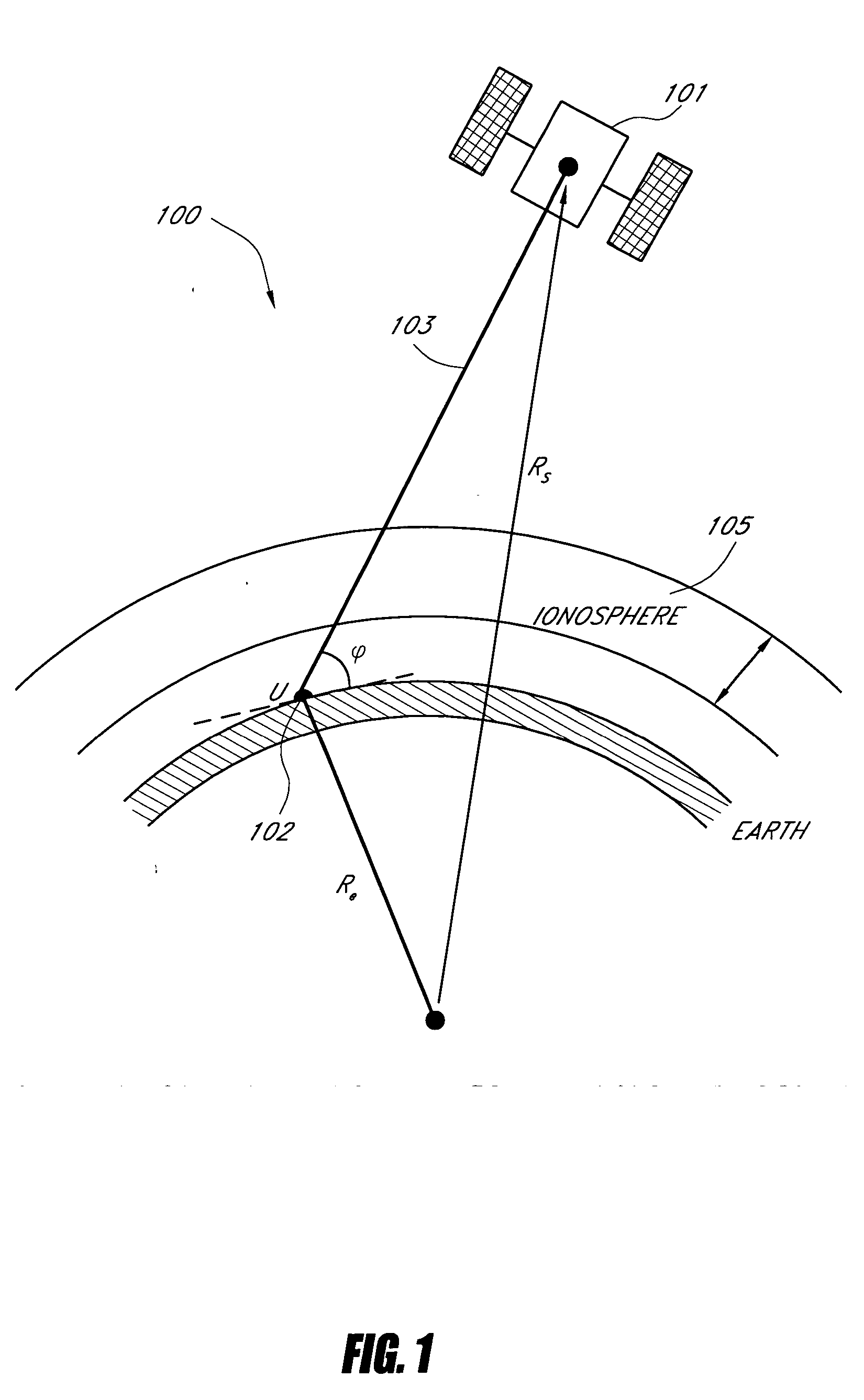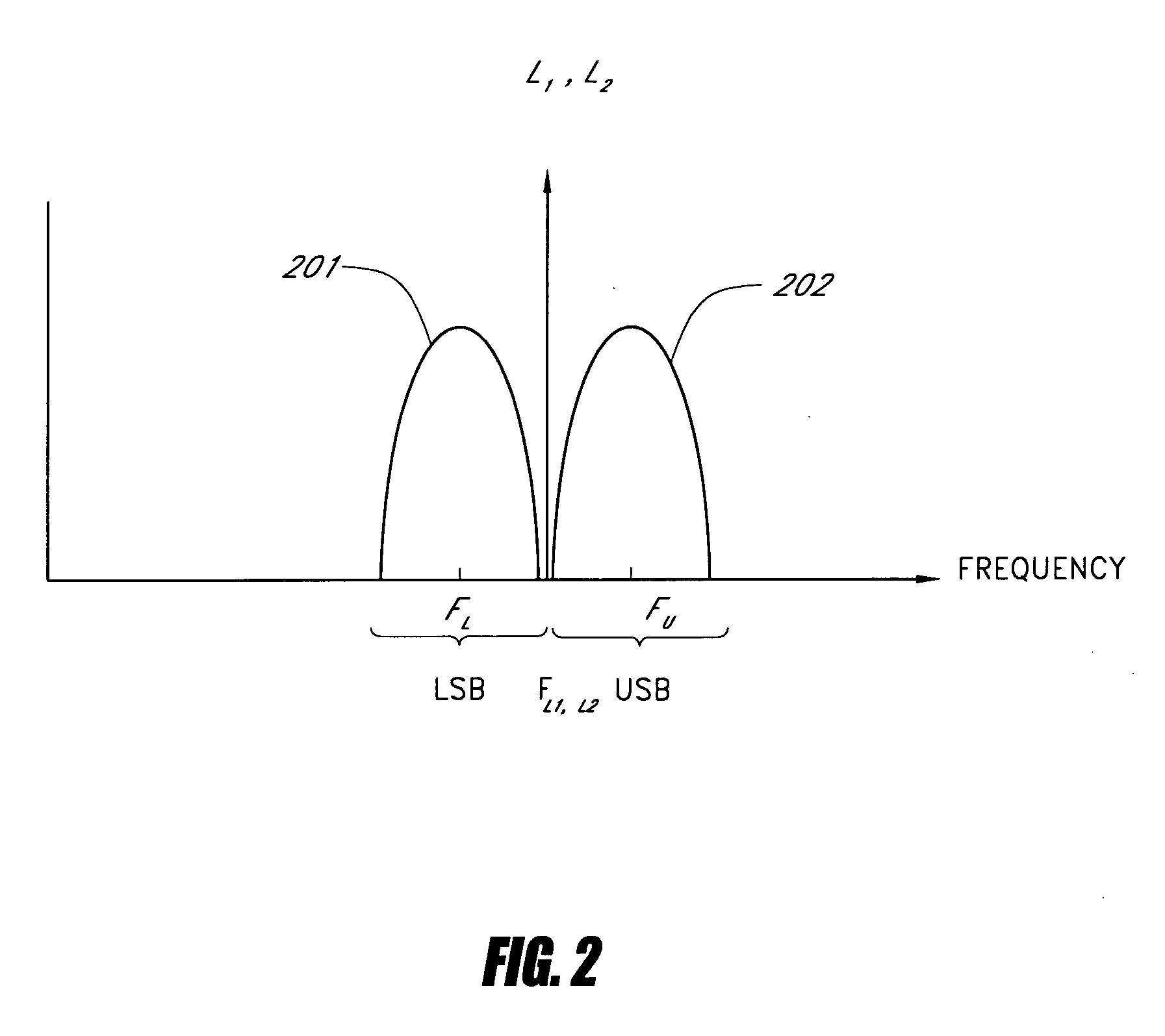Ionosphere delay measurement using carrier phase
a carrier phase and ionosphere technology, applied in the direction of plural information simultaneous broadcast, instruments, polarisation/directional diversity, etc., can solve the problem that single frequency band receivers cannot take advantage of the dispersive nature of the ionosphere and the relative small range error
- Summary
- Abstract
- Description
- Claims
- Application Information
AI Technical Summary
Benefits of technology
Problems solved by technology
Method used
Image
Examples
Embodiment Construction
[0026]FIG. 1 shows propagation of signals from a satellite 101 along a propagation path 103 to a receiver 102. A portion of the propagation path 103 passes through the ionosphere 105.
[0027] The ionosphere 105 is a dispersive medium, which means the path taken by the radio frequency signal is frequency dependant. Additionally, the speed at which the radio frequency travels through the ionosphere is also frequency dependant. As a result of these effects, the radio frequency bends along the trajectory from the satellite 101 and changes its group and wave velocity as the radio frequency signals propagate along the path 103 through the ionospheric layers to reach the receiver 102. In the case of satellite navigation systems, such as, for example, the Global Positioning System (GPS), bending of the signal propagation path 103 causes a relatively small range error, particularly if the satellite 101 elevation angle φ is sufficiently large. However, the change in the propagation speed cause...
PUM
 Login to View More
Login to View More Abstract
Description
Claims
Application Information
 Login to View More
Login to View More - R&D
- Intellectual Property
- Life Sciences
- Materials
- Tech Scout
- Unparalleled Data Quality
- Higher Quality Content
- 60% Fewer Hallucinations
Browse by: Latest US Patents, China's latest patents, Technical Efficacy Thesaurus, Application Domain, Technology Topic, Popular Technical Reports.
© 2025 PatSnap. All rights reserved.Legal|Privacy policy|Modern Slavery Act Transparency Statement|Sitemap|About US| Contact US: help@patsnap.com



